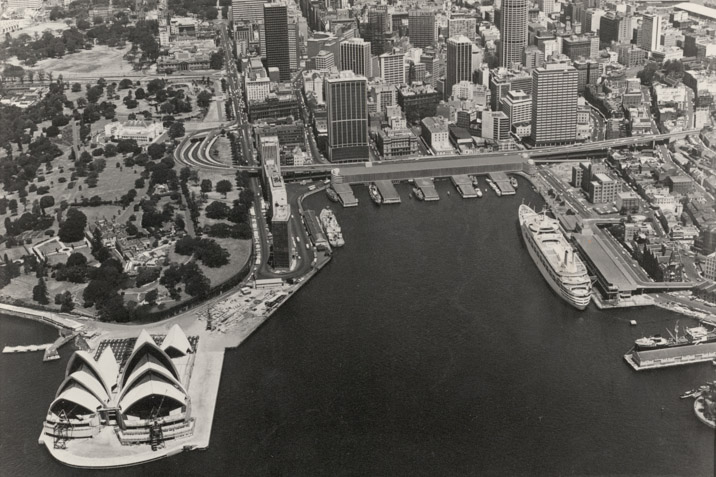Unrealised Sydney, an exhibit that delves into the visions and designs for our city before reality came to be, is now on display at the Museum of Sydney.
The exhibition displays a number of proposals made by both public and private entities for the harbour city to redevelop major precincts around the CBD in the 20th century which were fueled by the sense of optimism felt following the world wars.
Guest Curator, Robert Freestone from UNSW says that cities evolve as a dialogue between the possible and the actual with change often contested.
“The years after WWII saw complete replanning of precincts, not just buildings, on a scale that increased into the 1960s. Alongside the proclaimed technological social advancements came serious community resistance for the first time in Sydney.”
Unrealised Sydney focuses on eight precincts, with a range of plans, designs, sketches, photographs, models and documentary footage that form a rich insight into what Sydney ‘might have been’. Official and unofficial plans, competition entries, unsolicited proposals, and one-off inspirations sparked by historic events, opportunities, crises, and design challenges are also on display.
Projects are displayed both physically and digitally with ideas and plans ranging from sensible to disastrous. Accompanying the Unrealised Sydney exhibition is an interactive Realise experience where visitors can design their own future city block and consider factors including sustainability, liveability and productivity.
“Ideas for new buildings and precincts reveal a lot about the time of their conception - the economic and political influences, technological advances and insights into our society and environment,” says NSW State Archives CEO Adam Lindsay.
“Unrealised Sydney takes a look at the many visions that did not come to fruition and offers a thought-provoking reflection of what the city of Sydney may have become.”

Unrealised Sydney exhibition themes cover:
Tubowgule on Gadigal Country/Sydney Opera House
Calls to build a national opera house before WWII led to an international design competition in 1956 that attracted over 200 entries from 28 countries. The winning drawings, by Jørn Utzon, were described as ‘simple to the point of being diagrammatic’, but what else was suggested?
Warrane on Gadigal Country/Circular Quay
Circular Quay has long been one of Sydney’s most dynamic, diverse and unfinished places. The first comprehensive post-war plan was made in the early 1960s, followed by variously inventive and almost always controversial schemes through to the 1990s and beyond.
Tallawoladah on Gadigal Country/The Rocks
One of the first places of colonial settlement in Australia, The Rocks developed organically as a rough-and-tumble seaport village and with little thought to the Gadigal people or urban planning. However from the late 1950s ambitious redevelopment plans were in the offing.
Museum of Sydney on Gadigal Country
Australia’s first Government House complex built in 1788 is of national significance as the location of early encounters between the local Gadigal people and the British colonists. The decision by the state government in the 1980s to invite tenders for redevelopment led to a series of attempts to find the right balance between heritage and commerce.
Macquarie Street on Gadigal Country
Named after the civic-minded Governor, Macquarie Street has long been recognised as Sydney’s principal public and cultural axis. The need to conserve its major historic buildings was publicly debated and gradual acceptance of the precinct’s heritage significance stymied major redevelopment plans.
Wallamool on Gadigal Country / Woolloomooloo
In the early post-war years, Woolloomooloo was seen as a run-down working-class area. Various redevelopment plans from the 1930s culminated in the late 1960s in what a city planner described as ‘the archetype of all urban planning disasters’.
Tumbalong on Gadigal Country / Darling Harbour
This prime 50-hectare site attracted private and public entrepreneurs offering a confusing jangle of contradictory plans. Eventually a vision to create an entertainment, retail, convention, exhibition and museum precinct was confirmed as part of Australia’s 1988 bicentenary celebrations.
Tumbalong on Gadigal Country / Barangaroo
Barangaroo, once an integral part of Sydney’s working port, is the most recent story. An international urban design ideas competition attracted nearly 140 entries and a winning entry that was not built.
More information can be found at slm.is/unrealisedsydney.
Images (All Supplied)
Top: Discovey Village, Darling Harbour development proposal architect, Tony Corkill. NSW State Archives.
Above: Photomontage of proposed parking station at Circular Quay. From Sydney Cove carpark, Wood Hall Limited, 1970, Architects, Hall and Anderson. NSW State Archives.

